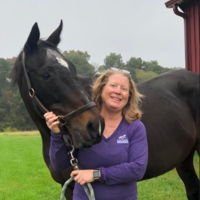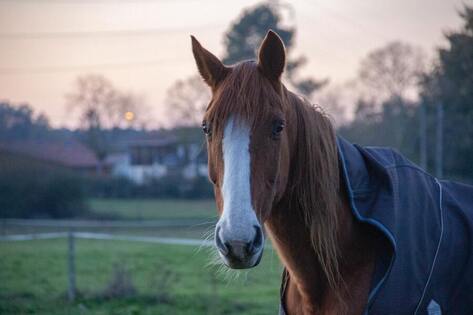
The Most Popular Horse Breeds Of 2019
Equestrian Advice & Guides General Equestrian
Build your business profile for FREE and expose your services to thousands of potential clients!
Create my profile now!
W.I.N.T.E.R. Essentials
Water, Ice, Nutrition, Training, Exercise, Rest
Water serves an essential life purpose in every living creature including horses. Simply stated, a horse needs water to survive. Dehydration can lead to many ailments and health risks, including life-threatening ones. In colder winter months, horses may be reluctant to drink enough water because of the low temperatures of both air and water. Heated buckets both inside and outside encourage horses to drink enough. Some owners put molasses or other sugary products in warm water to encourage drinking. Monitoring water intake and providing plenty of appealing, fresh, clean water makes a huge difference to a horse’s willingness to consume enough to stay hydrated and healthy.
Ice can create a huge challenge to keeping enough water available. Cracking ice that has formed on buckets and troughs is hard work to say the least, but for areas where there are no heated buckets or troughs, it is a must. I have found that using a ripper bar makes cracking easier requiring less muscle on my part. Ice on the ground poses the greatest hazard as horses with or without shoes can slip and fall. Their large bodies and spindly legs can cause balance problems on poor, slippery footing such as ice. Using a pet safe anti-ice product in areas around the barn where horses have to walk can reduce the chances of slipping for both humans and horses.
Nutrition may need some adjusting in winter as horses burn more energy to stay warm. If they are in moderate to heavy work, they will need proper nutrition for that as well. As always, horses need plenty of forage, grass, and quality hay. When pastures run low on grass as they often do in winter, horses need more hay as a replacement. If you feed your horses grain, they may need more in winter. As always, increase amounts gradually. Keeping weight on your horse will contribute to his/her general health and ability to manage physically in cold temperatures.
Training should continue in winter months provided an indoor arena is available or the temperatures and outdoor conditions are appropriate and safe. It is best to ride in temperatures above freezing or at least above 25 degrees because horses have to use more energy when it is colder and their lungs also have to work harder to breathe. Clipping makes it possible to train seriously year round, but horses must then be well blanketed when not in work. Some riders may choose to do lighter work in winter or even give their horses time off depending on where they live and the needs of both horse and rider. If a horse is given time off in winter, training in Spring Should be gradual to rebuild muscle mass and strength.
Exercise remains important for every horse whether or not s/he is in training for a given discipline. Horses still need to move around in the field for most of the day, at least to remain healthy and to avoid colic. Some horses may need to be encouraged to move around. When weather becomes too severe or dangerous for turnout if there are no sheds, they need to be walked or hand grazed to keep them from getting uncomfortable and to maintain safe, healthy routines. Personally, I love to ride in the snow. It’s much more work for a horse to walk through
deeper snow or even a few inches of powder, so keep in mind that your horse is getting much more exercise walking in snow.
Rest remains important in winter weather. When temperatures plummet, horses need to use a great deal of energy to stay warm. Comfortable bedding that’s a bit tucker than usual, a clean shed with straw, or a dry spot to rest will help your horse get the rest s/he needs to maintain energy and stay healthy.

